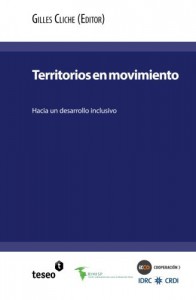Polarización y segregación en la distribución del ingreso en el Perú: trayectorias desiguales
Territorios en movimiento: hacia un desarrollo inclusivo
| Year | : | 2014 |
|---|---|---|
| Author/s | : | Javier Escobal, Carmen Ponce |
| Area/s | : | Rural development and agriculture, Poverty and equality, Natural resources, extractive industries and social conflict |
Escobal, J. y Ponce, C. (2014). Polarización y segregación en la distribución del ingreso en el Perú: trayectorias desiguales. En G. Cliche (Ed.), Territorios en movimiento: hacia un desarrollo inclusivo (pp. 59-84). Buenos Aires: Teseo.
In the last three decades, Peru experienced the greatest crisis in its republican history (dramatic internal conflict and hyperinflationary process) with a severe macroeconomic adjustment and a set of structural reforms, followed by a dictatorship and the deepening of the economic liberalization process and, finally, 10 years of sustained economic growth. The last decade has also seen an exacerbation of social conflict over the ownership and use of natural resources, despite a significant, albeit still insufficient, reduction in the poverty rate. Based on estimates of per capita expenditure growth, poverty and inequality for 1981, 1993 and 2007, the study finds that although inequality of per capita expenditure between individuals (measured by the Gini or the Theil) shows a slight downward trend, inequalities between groups (associated with processes of segregation and polarization and linked in the literature to greater social conflict) have been exacerbated. In particular, there is a long-term trend towards spatial segregation and polarization in favor of large cities as opposed to the dynamics of small cities and towns. This trend towards increasing spatial polarization goes hand in hand with increasing polarization between indigenous and non-indigenous groups; however, a similar trend is not observed between groups with different levels of education.







